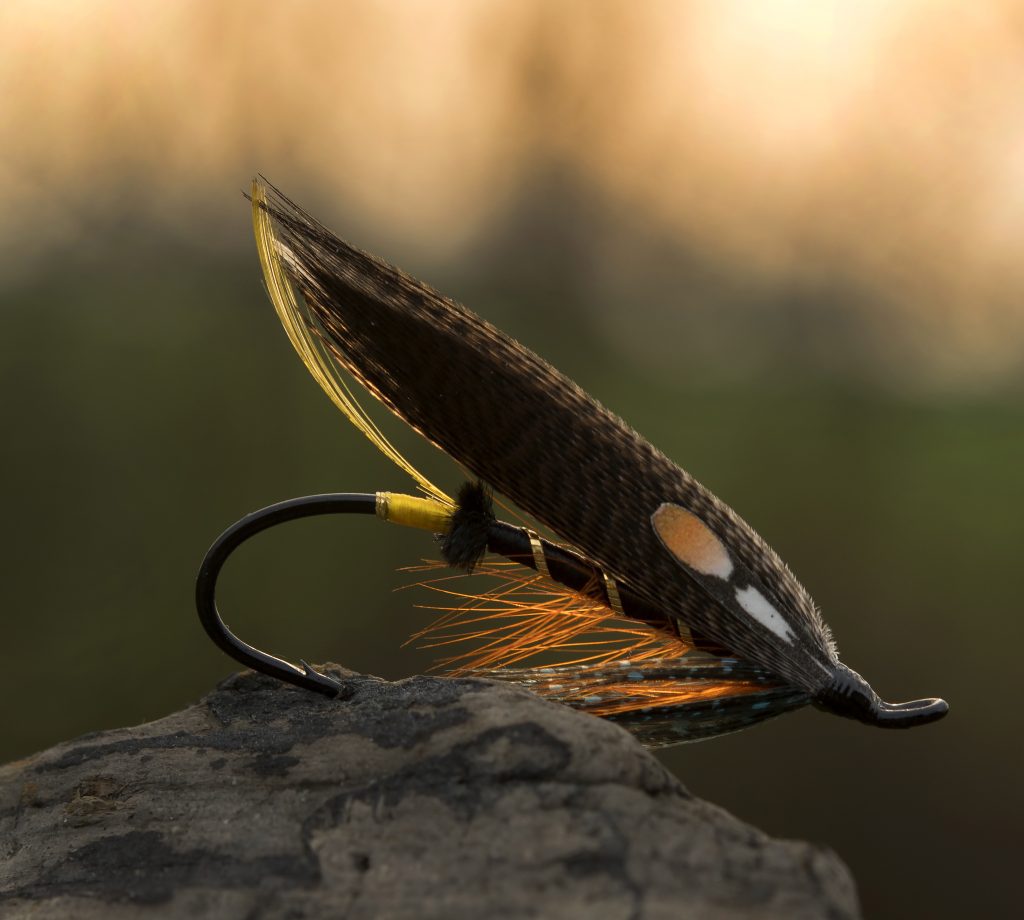
Perhaps the most famous of the classic salmon flies? Perhaps the one with the most variants and modern interpretations? If one ever were to answer that one question that no fly fisher ever wants to answer, the answer could be Thunder and Lightning. Let’s take a closer look at this beautiful combination of black, orange, blue and dark brown, colours.
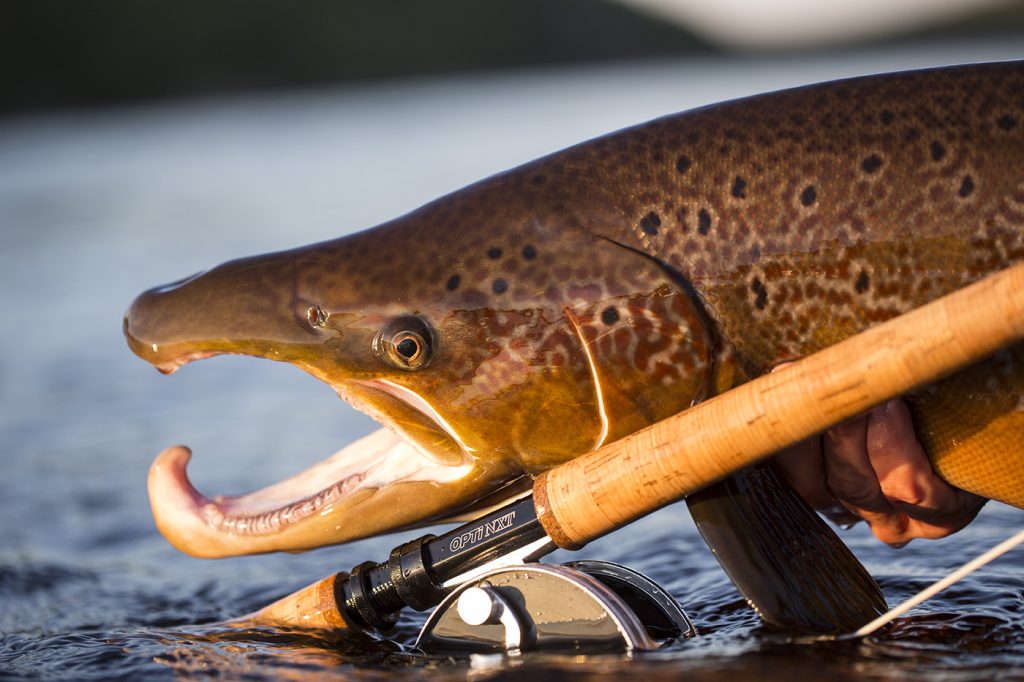
A spectacular and beautiful colored male salmon. Photo by The Fly Fishing Nation.
The details of the fly’s origins are lost in time, but it is from the middle of the 1800s and was originated by James Wright. Wright lived Sprouston, Scotland, close to River Tweed. He was one of the most important and influential fly dressers of his time and is the man behind many famous, classic patterns. Apart of the Thunder and Lightning, most notably the Silver Doctor.
Like many other of the most famous and wide spread patterns, there are several variations of the Thunder and Lightning. These are mostly subtle changes like adding red Ibis to the tail and so forth. All the modern, hair winged version bring across the overall colour scheme and simplifies the pattern. Let’s face it, whether or not you catch a salmon on a T&L is not affected by the presence or absence of horns from a blue macaw’s tail. Yellow tail, black body, orange and blue hackles and a brown wing. That in combination spells “Thunder and Lightning” to me.

A Thunder and Lightning on a size 4 HR 414, seen from a salmon’s point of view.
Apart from having the coolest of cool fly names, the name does seem to have some connection to its use:
“On the first rise of water after rain – a time when Salmon take well if shewn the right thing – my favourite is the “Thunder and Lightning”, Kelson says. Kelson also prefers using small T&Ls. In his time, small was, in the case T&L, a body no larger than an inch and a quarter. That’s a big fly by any modern standard. He does however recommend flies one size larger for “pools” and two or three sizes larger for “fast-running streams”. I’m certain Kelson would have frowned upon the very small versions used today.
Attesting further to the coherence between name and use, Kelson remarks, after nothing the negative effects of an approaching thunder storm: “But when the grand crash comes the fun is sometimes fast and furious, no matter what fly is used. A few good peals of thunder, with its accompanying downpour of rain, speedily clear the atmosphere, and Salmon, in common with animals, and even human beings, are quickly influenced by the change”.
Today the Thunder and Lightning is popular in all kinds of weather and water – perhaps most in slightly peaty water, where it blends in well, surprising the salmon so it grabs the fly out of reflex. The orange and brown colour scheme makes it a good late season fly. Large versions are good for early season salmon, small ones for low water and late season. In short – it may be that one fly, if anyone were to twist your arm for a answer of “the question”.
Hair winged versions, Spey style versions, hackle versions, shrimp style versions, even as a trout fly, they’re all out there catching fish. If you haven’t got a few of the already, steal a few from your best friend’s box when he’s looking the other way!
No matter the variation, the fly does equally well on hooks and tubes. Here’s a link to a small version on a double hook I like to fish late in the season.
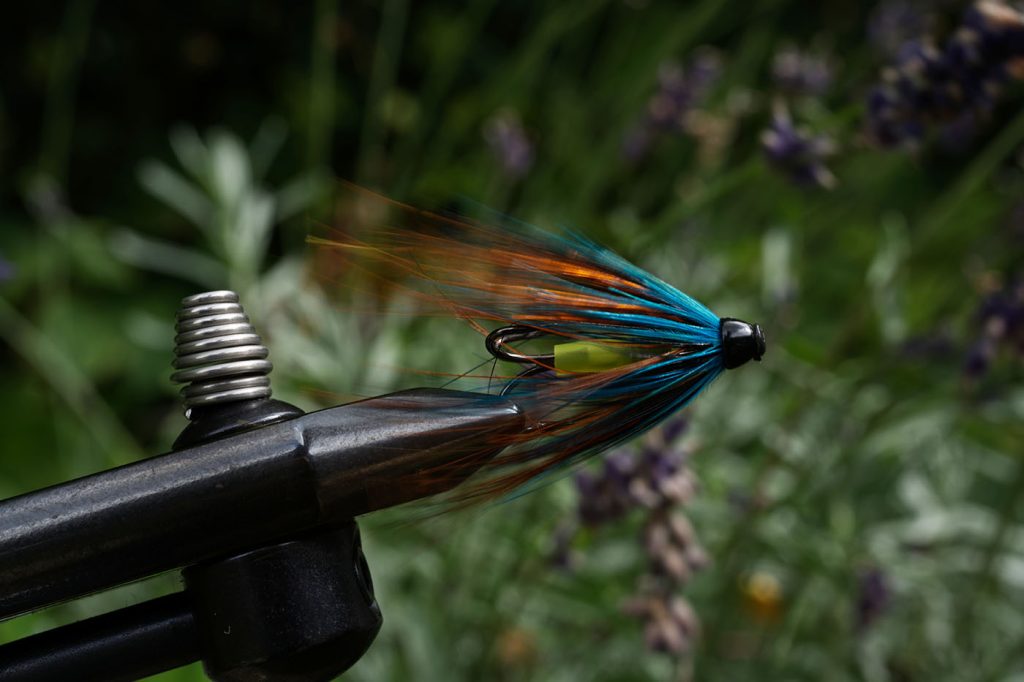
A small T&L hackle version on a Pro Sportfisher Nano tube. The tips of the hackles move and vibrate in the current. These are all dyed pheasant tail rump feathers.

Dark brown, orange and blue – beautiful and deadly! A speyhackled variation on the classic version tied by Håkan Karsnäser.
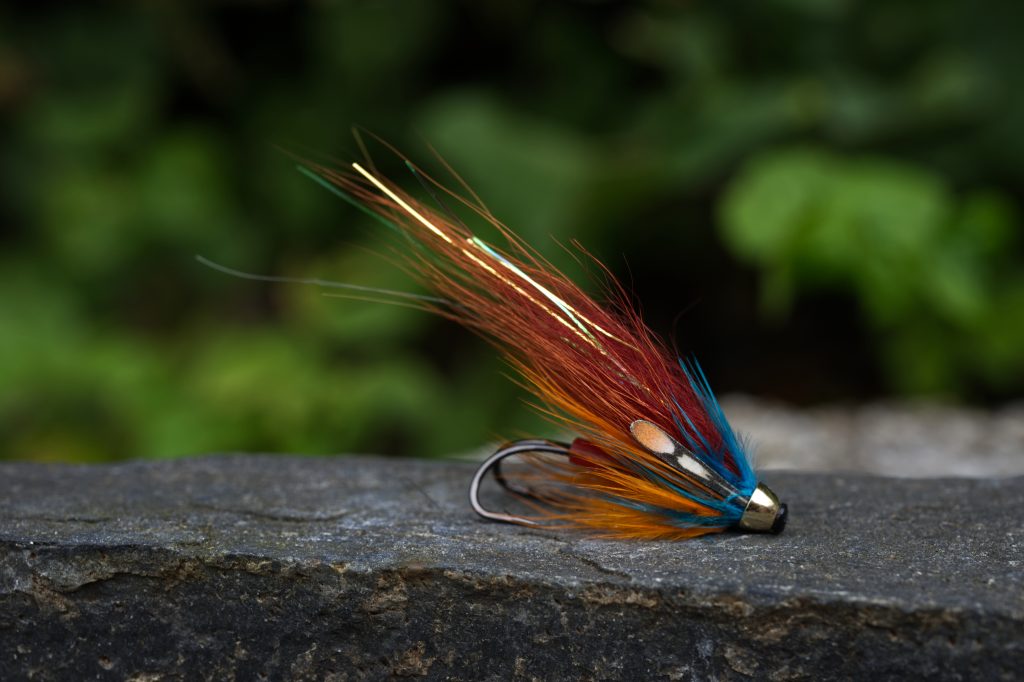
A more “classic” Scandinavian style T&L variant on a tube with an HR 440 size 12. Tiued by Lars Chr. Bentsen.
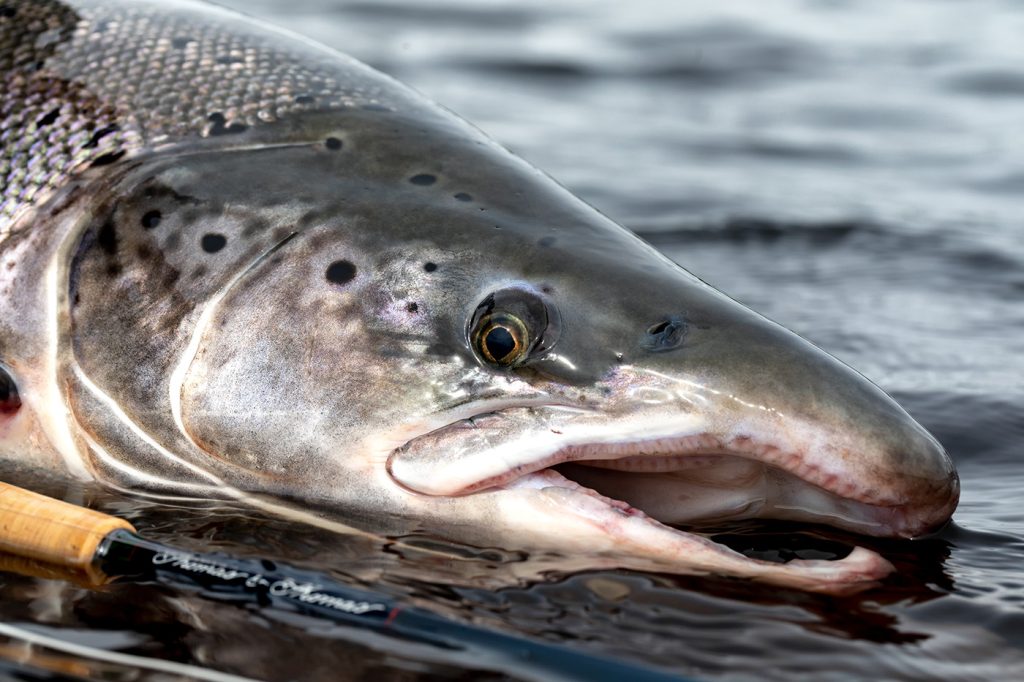
Photo by The Fly Fishing Nation.
